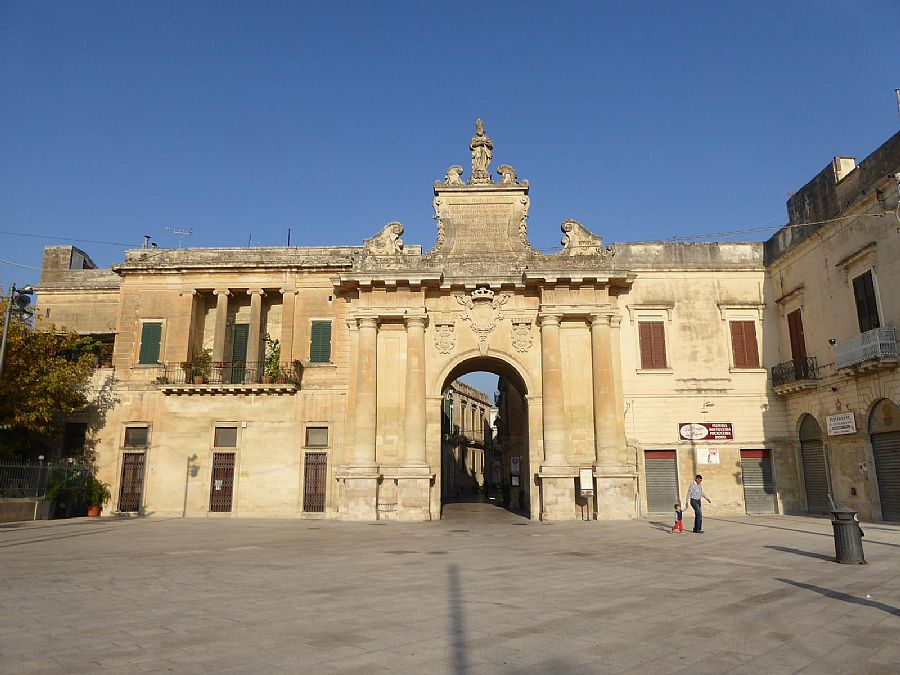Carpignano Salentino

This town's history goes back very far, to prehistoric shelters and Greek settlers. There are archeological finds that people lived here at least one thousand years before BC, and menhir are scattered around to testify. People lived in a semi-underground existence, as evidenced by grotto-homes, cave churches and underground olive oil pressing chambers. The town preserved one of the oldest places of worship in Puglia, along with the oldest Byzantine paintings in Puglia.
Carpignano Salentino is 24 kilometers from the beautiful baroque city of Lecce, and only 10 kilometers from the Adriatic coast. Pretty coastal Otranto is just 15 kilometers away. It was set along an ancient Roman road that was part of the Via Traiana, and the town is one of the "Griko" towns of the Salento that speak a Greco-Latin dialect. After the Greeks and Romans came the Normans; the entire area was placed under feudal law and it remained that way albeit under various lords and rulers until the unification of Italy. However, some of the noble families enriched Carpignano Salentino with the regal palaces and baroque churches you can see as you walk around town.
A few of the highlights include Palazzo Chironi, the Palazzo Ducale and the Torre Orologio (or bell tower). Absolutely to not miss is the Cripta di Santa Cristina, the small facade hides a big surprise with the Byzantine frescoes that decorate the crypt. The oldest signature dates it at 959. The Santuary of the Madonna della Grotta is a short distance outside town, and in the lower part of the church also preserves Byzantine artwork, along with an icon of the Madonna that was said to miraculously appear to a blind man who sought shelter here during a storm. The upper part was built by devotees who came to see the miraculous image of the Virgin Mary, dating to the 1600s with some fine fresoces from that period. There is an example of Salentine paper mache sculpture work, donated to the church in 1938 by Duke Ghezzi. Look for the paper mache sculptures around the Salento, they are very traditional.
Outside town are two Menhir to look for, too. Menhir Grassi is along the road towards Meledugno, protected by a curved wall and marked by a sign. Menhir Staurotomea is a Griko name that means big cross. It is found on the provincial road towards Borgagne. There is also a dolmen outside Carpignano, near the cemetery. Enthusiasts of ancient artifacts will love all of these!
Of course, there are stores and restaurants and cafes around town, as well as in next-door town of Martano.
Rent a holiday home in Carpignano Salentino and travel like a local.

 Amalfi Coast
Amalfi Coast Sorrento Coast
Sorrento Coast Tuscany
Tuscany Cilento National Park
Cilento National Park Lake Como
Lake Como Rome and Latium
Rome and Latium Umbria
Umbria Capri and Ischia
Capri and Ischia Venice
Venice Puglia (Apulia)
Puglia (Apulia) Liguria
Liguria Sicily
Sicily Lake Maggiore
Lake Maggiore Lombardy
Lombardy Sardinia
Sardinia Lake Garda
Lake Garda Abruzzo and Marche
Abruzzo and Marche Calabria
Calabria

